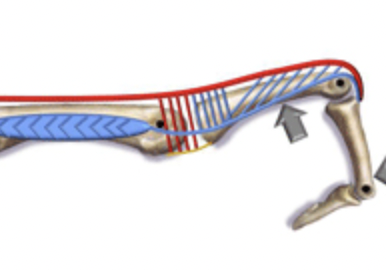DRUJ Instability and Hand Therapy Interventions
The distal radial ulnar joint (DRUJ) is the joint consisting of the distal radius and ulna which is held together by the ligamentous structure known as the TFC. DRUJ instability can be acute or chronic in nature. An acute injury is usually addressed by placing the patient in a long-arm cast for 6 weeks. In chronic cases, this becomes a much more complex issue and the severity depends on the reason for the chronic instability.

Conservative management of chronic DRUJ instability is often times the first line of treatment as the surgical procedures can be invasive and outcomes can vary. If an individual is very active surgical intervention is more likely to be indicated. However, a trial of therapy can be beneficial in determining if surgical intervention is needed to repair the DRUJ injury.
Functional Splinting
Conservative DRUJ injury treatment typically consists of functional bracing and is often key to successful management. You can test the stability of the joint by first applying a dorsal pressure over the ulna and a volar force on the radius. While holding the pressure over the ulna and radius, take the patient through forearm rotation. If the patient reports less pain, this is an indication they should be splinted with a dorsal pressure over the ulna and volar pressure over the radius. However, if this causes more pain, the opposite should be tested. A volar pressure should be placed over the ulna and a dorsal pressure over the radius. If there is no pain with forearm rotation, then splinting should replicate the pressure.
Therapy Interventions
When treating these patients it is very important to respect their pain as well as avoid exacerbating the symptoms. Yes, the structures can be stressed to facilitate healing however it is important to manage the stress in a slow controlled manner. Therefore having an understanding of the instability pattern and stage of injury is key to DRUJ injury treatment. It is important to keep exercises simple, once they can be performed within a pain-free range advance the patient to more challenging exercises.
Common DRUJ Injury Treatment Interventions
- Edema management techniques
- Contrast bathes for managing inflammation and pain
- Pain-free range of motion including forearm rotation, if this is painful the functional splint can be utilized while performing ROM. If still painful can begin range of motion in the dart-thrower plane.
- Isometric strengthening of PQ and ECU
- Proprioceptive exercises advance from the joint position in space with replication to more advanced activities such as tossing a ball/disc stacker

- Once again only advance the patient if they are tolerating well and there are no exacerbation of symptoms can continue to advance with all exercises.
Treating DRUJ instability is tricky and varies based on the extent of the pathology.
Zhiqing, C. (2018) A novel staged wrist sensorimotor rehabilitation program for a patient with triangular fibrocartilage complex injury: A case report. Journal of Hand Therapy, 32, 525-533.
https://www.jhandtherapy.org/article/S0894-1130(17)30404-0/fulltext
More To Read
Scar Wars: Scar Management Techniques
We will briefly discuss Scar Management Options and Techniques
Read MoreArticle Review: Trapeziectomy and LRTI: What can patients with CMC osteoarthritis expect 12 months after the procedure?
Janakiramanan, N., Miles, O., Collon, S., Crammond, B., McCombe, D., & Tham, S. K. (2021). Functional Recovery Following Trapeziectomy and Ligament Reconstruction and Tendon Interposition (Trapeziectomy and LRTI): A Prospective Longitudinal Study. The Journal of hand surgery, S0363-5023(21)00304-X. Advance online publication. https://doi.org/10.1016/j.jhsa.2021.04.036 The skinny: Patients with trapeziometacarpal (TMC) osteoarthritis who are candidates for a trapeziectomy and…
Read MoreINTEROSSEOUS MUSCLE TIGHTNESS TESTING
May 2012 No. 19 INTEROSSEOUS MUSCLE TIGHTNESS TESTING Judy Colditz, OT/L, CHT, FAOTA INTEROSSEOUS MUSCLE TIGHTNESS TESTING – ARE YOU DOING IT CORRECTLY? The common term “Intrinsic Tightness Testing” is a misnomer as it describes a maneuver specifically designed to test tightness of the interosseous muscles. The interosseous muscles are small, short-fibered muscles contained within…
Read MoreSign-up to Get Updates Straight to Your Inbox!
Sign up with us and we will send you regular blog posts on everything hand therapy, notices every time we upload new videos and tutorials, along with handout, protocols, and other useful information.





